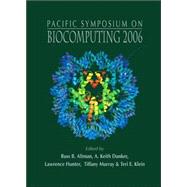
What is included with this book?
| Extraction of gene-disease relations from medline using domain dictionaries and machine learning | p. 4 |
| Significantly improved prediction of subcellular localization by integrating text and protein sequence data | p. 16 |
| Evaluation of lexical methods for detecting relationships between concepts from multiple ontologies | p. 28 |
| Automatically generating gene summaries from biomedical literature | p. 40 |
| Finding GeneRIFs via gene ontology annotations | p. 52 |
| PhenoGO : assigning phenotypic context to gene ontology annotations with natural language processing | p. 64 |
| Large-scale testing of bibliome informatics using Pfam protein families | p. 76 |
| Predicting gene functions from text using a cross-species approach | p. 88 |
| Bootstrapping the recognition and anaphoric linking of named entities in Drosophila articles | p. 100 |
| Selecting biological data sources and tools with XPR, a path language for RDF | p. 116 |
| Fast, cheap and out of control : a zero curation model for ontology development | p. 128 |
| Putting semantics into the semantic Web : how well can it capture biology? | p. 140 |
| Event ontology : a pathway-centric ontology for biological processes | p. 152 |
| Discovering biomedical relations utilizing the World-Wide Web | p. 164 |
| Biodash : a semantic Web dashboard for drug development | p. 176 |
| SemBiosphere : a semantic Web approach to recommending microarray clustering services | p. 188 |
| Experience in reasoning with the foundational model of anatomy in OWL DL | p. 200 |
| A machine learning approach to predicting peptide fragmentation spectra | p. 219 |
| Identifying protein complexes in high-throughput protein interaction screens using an infinite latent feature model | p. 231 |
| High-accuracy peak picking of proteomics data using wavelet techniques | p. 243 |
| Fast De novo peptide sequencing and spectral alignment via tree decomposition | p. 255 |
| Experimental design of time series data for learning from dynamic Bayesian networks | p. 267 |
| Finding diagnostic biomarkers in proteomic spectra | p. 279 |
| Gaussian mixture modeling of [alpha]-[tau] helix subclasses : structure and sequence variations | p. 291 |
| An SVM scorer for more sensitive and reliable peptide identification via tandem mass spectrometry | p. 303 |
| Normalization regarding non-random missing values in high-throughput mass spectrometry data | p. 315 |
| A point-process model for rapid identification of post-translational modifications | p. 327 |
| A new approach for alignment of multiple proteins | p. 339 |
| Discovering regulated networks during HIV-1 latency and reactivation | p. 354 |
| Mining Alzheimer disease relevant proteins from integrated protein interactome data | p. 367 |
| Accounting for structural properties and nucleotide co-variations in the quantitative prediction of binding affinities of protein-DNA interactions | p. 379 |
| Improving computational predictions of Cis-regulatory binding sites | p. 391 |
| Struct2Net : integrating structure into protein-protein interaction prediction | p. 403 |
| Identifying interaction sites in "recalcitrant" proteins : predicted protein and RNA binding sites in rev proteins of HIV-1 and EIAV agree with experimental data | p. 415 |
| Modeling and simulation with hybrid functional Petri nets of the role of interleukin-6 in human early haematopoiesis | p. 427 |
| Modeling and analyzing three-dimensional structures of human disease proteins | p. 439 |
| Relaxing haplotype block models for association testing | p. 454 |
| Effect of the peroxisome proliferators-activated receptor (PPAR) gamma 3 gene on BMI in 1,210 school students from Morelos, Mexico | p. 467 |
| Transferability of tag SNPs to capture common genetic variation in DNA repair genes across multiple populations | p. 478 |
| A tool for selecting SNPs for association studies based on observed linkage disequilibrium patterns | p. 487 |
| Data simulation software for whole-genome association and other studies in human genetics | p. 499 |
| TagSNP selection based on pairwise LD criteria and power analysis in association studies | p. 511 |
| Efficient two-stage genome-wide association designs based on false positive report probabilities | p. 523 |
| The whole genome TagSNP selection and transferability among HapMap populations | p. 535 |
| Class prediction from time series gene expression profiles using dynamical systems kernels | p. 547 |
| Computational strategy for discovering druggable gene networks from genome-wide RNA expression profiles | p. 559 |
| A bivariate functional mapping model for identifying haplotypes that control drug response for systolic and diastolic blood pressures | p. 572 |
| Risk factor interactions and genetic effects associated with post-operative atrial fibrillation | p. 584 |
| Learning a predictive model for growth inhibition from the NCI DTP human tumor cell line screening data : does gene expression make a difference? | p. 596 |
| Table of Contents provided by Blackwell. All Rights Reserved. |
The New copy of this book will include any supplemental materials advertised. Please check the title of the book to determine if it should include any access cards, study guides, lab manuals, CDs, etc.
The Used, Rental and eBook copies of this book are not guaranteed to include any supplemental materials. Typically, only the book itself is included. This is true even if the title states it includes any access cards, study guides, lab manuals, CDs, etc.